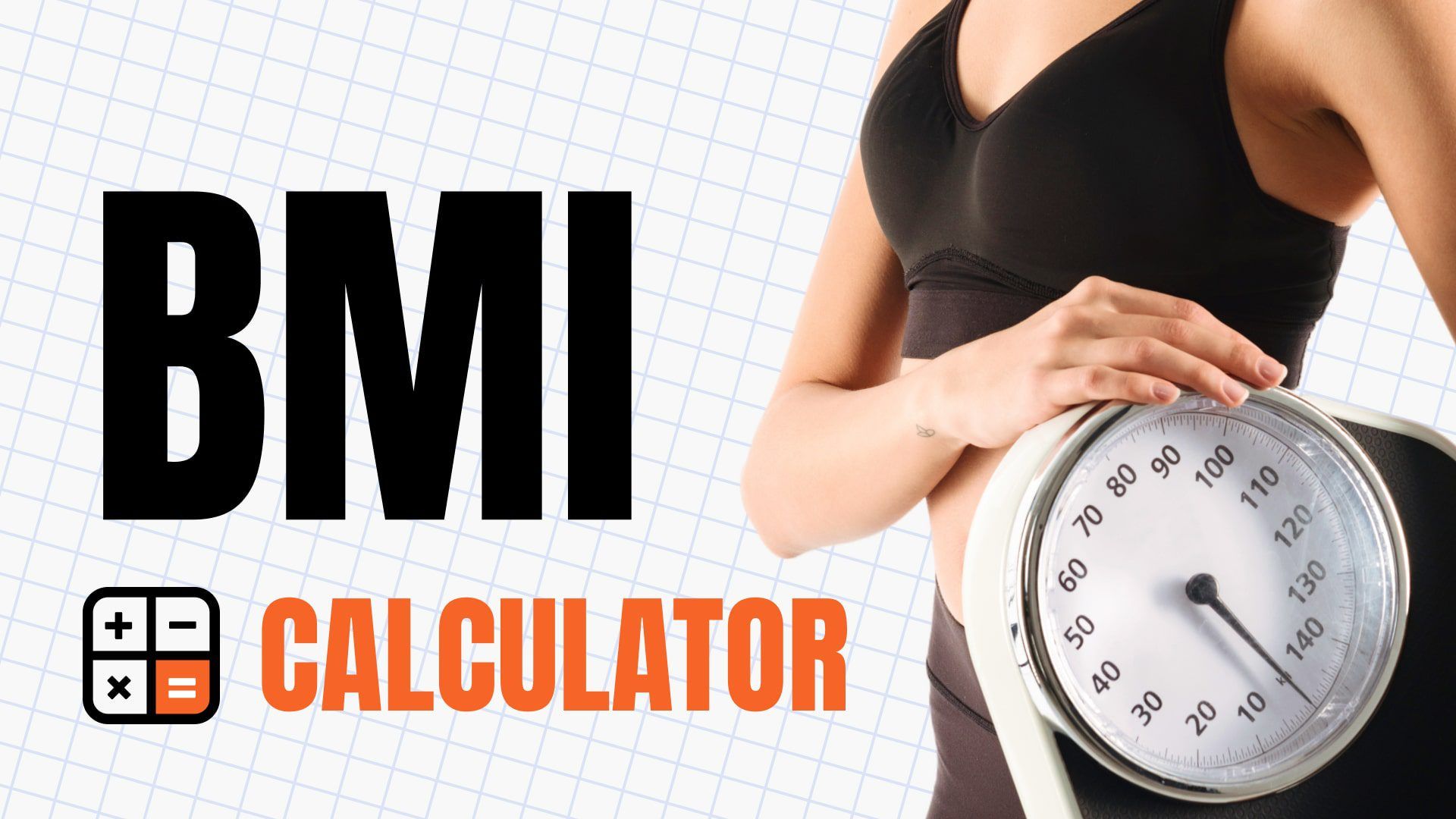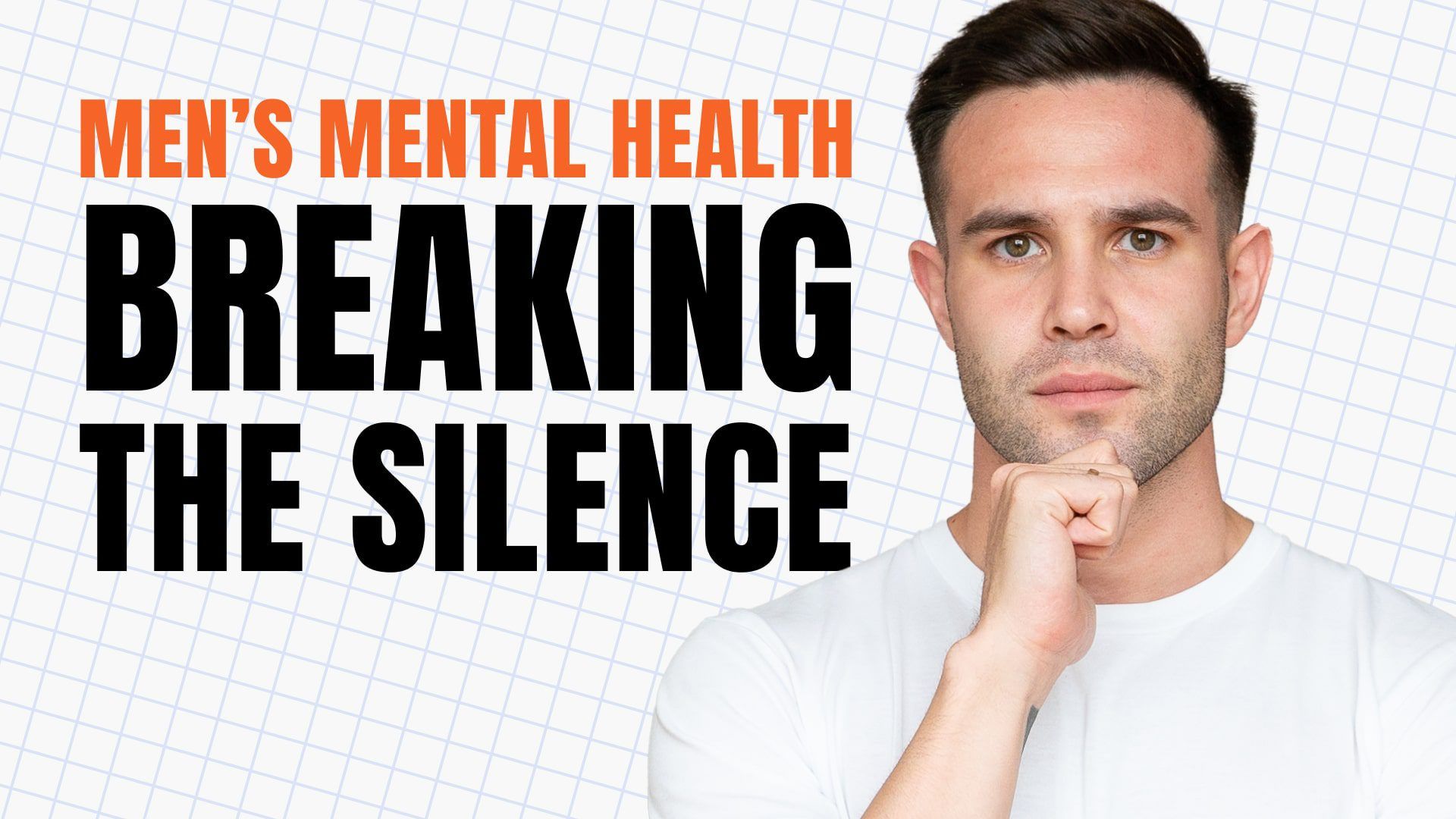
Calculate Your BMI: Body Mass Index Calculator + Guide
Table of contents
In this article, you will learn…
In this article, you will discover everything you need to know about the Body Mass Index (BMI) calculator, from how it works to why it’s essential for assessing your health. You’ll also learn how to accurately calculate your BMI using different measurement units, interpret the results, and understand the implications of your BMI on your overall health.
Key Takeaways
- BMI is a simple yet powerful tool for evaluating your body weight in relation to your height.
- The BMI calculator helps you quickly determine your BMI using either US or Metric units.
- Understanding your BMI can guide you toward healthier lifestyle choices.
- While BMI is useful, it has limitations and should be considered alongside other health metrics.
- This article will walk you through using the BMI calculator effectively and interpreting the results for your health.
How BMI is Calculated
BMI (Body Mass Index) Formula:
- Metric Units:
- US Units:
The BMI formula is straightforward. It takes your weight in kilograms and divides it by your height in meters squared (for Metric units). If you’re using US units, the formula multiplies by 703 to adjust for the different measurement units.
Step-by-Step Calculation
Example Calculation: Let’s say you weigh 160 pounds and are 5 feet 10 inches tall.
- Convert height to inches:
- Apply the formula:
This BMI falls within the “Normal weight” category.
If you’re using Metric units, the process is even simpler. Just divide your weight in kilograms by your height in meters squared.
Using the BMI Calculator
Features of the Calculator
The BMI calculator is designed for ease of use. It allows you to input your age, gender, height, and weight in either USor Metric units. You can switch between these units effortlessly, making it accessible for anyone around the world.
Key Features:
- Dual Unit System: Switch between US (feet/inches, pounds) and Metric (centimeters, kilograms) units.
- Age and Gender Input: Customize your BMI calculation by considering these factors.
Interpreting Your Results
Once you input your data and hit “Calculate,” the BMI calculator provides an immediate result, displaying your BMI value along with a color-coded indicator.
BMI Categories:
- Underweight: Less than 18.5
- Normal weight: 18.5 – 24.9
- Overweight: 25 – 29.9
- Obesity: 30 or more
Additional Metrics:
- BMI Prime: The ratio of your BMI to the upper limit of the normal weight BMI (25).
- Ponderal Index: An adjustment of BMI to better account for differences in height.
These extra metrics provide a deeper insight into your health beyond just the standard BMI. For example, BMI Prime can help you understand how close you are to a healthy weight range, while the Ponderal Index offers another perspective on your body composition.
The Limitations of BMI
BMI as a General Indicator
While BMI is a helpful tool, it’s important to recognize that it is a general indicator of body weight in relation to height. BMI does not differentiate between muscle and fat, which can lead to misleading results, particularly for athletes or those with a muscular build.
Key Points:
- Does not account for muscle mass: A person with high muscle mass might have a high BMI but low body fat.
- Ignores fat distribution: BMI does not consider where fat is stored in the body, which can be crucial for assessing health risks.
- Age and gender variations: BMI does not fully account for the differences in body composition across ages and between genders.
Alternative Measurements
To get a more comprehensive view of your health, consider using additional measurements alongside BMI:
Waist-to-Hip Ratio:
- Measures the distribution of body fat.
- A higher ratio indicates a higher risk of cardiovascular diseases.
Body Fat Percentage:
- Provides a more accurate picture of body composition.
- Can be measured using tools like skinfold calipers or more advanced methods like DEXA scans.
Waist Circumference:
- Directly measures abdominal fat.
- High waist circumference is linked to increased health risks, such as diabetes and heart disease.
By combining these metrics with your BMI, you can gain a more complete understanding of your health and potential risks.
The Health Implications of Your BMI
Health Risks Associated with Different BMI Categories
Your BMI can provide insight into potential health risks. Here’s what different BMI categories generally mean:
Underweight (BMI < 18.5):
- Potential Health Risks: Nutritional deficiencies, weakened immune system, osteoporosis, anemia.
- Recommendation: Focus on gaining weight through a balanced diet and strength training.
Normal Weight (BMI 18.5 – 24.9):
- Health Implications: Generally associated with lower health risks.
- Recommendation: Maintain current lifestyle with a balanced diet and regular physical activity.
Overweight (BMI 25 – 29.9):
- Potential Health Risks: Increased risk of heart disease, hypertension, type 2 diabetes.
- Recommendation: Consider lifestyle changes such as increasing physical activity and improving diet quality.
Obesity (BMI ≥ 30):
- Serious Health Risks: High risk of heart disease, stroke, type 2 diabetes, certain cancers.
- Recommendation: Seek guidance from healthcare professionals for weight management strategies, including diet, exercise, and possibly medical interventions.
How to Improve Your BMI
Improving your BMI often requires changes in diet, exercise, and lifestyle:
Dietary Tips:
- Balanced Nutrition: Focus on whole foods, including plenty of fruits, vegetables, lean proteins, and whole grains.
- Portion Control: Be mindful of portion sizes to avoid overeating.
Exercise Tips:
- Regular Physical Activity: Aim for at least 150 minutes of moderate-intensity exercise per week.
- Strength Training: Incorporate resistance exercises to build muscle and boost metabolism.
Lifestyle Tips:
- Sleep: Ensure 7-9 hours of quality sleep each night to support weight management.
- Stress Management: Practice stress-reducing techniques like mindfulness, yoga, or deep breathing exercises.
When your BMI is outside the normal range, it’s important to take action to improve your health. However, remember that BMI is just one piece of the puzzle, and other factors should be considered in a comprehensive health assessment.
FAQ
Can BMI be an accurate indicator for athletes and bodybuilders?
BMI can be misleading for athletes and bodybuilders because it does not differentiate between muscle and fat.
Since muscle weighs more than fat, individuals with high muscle mass may have a higher BMI, which might inaccurately categorize them as overweight or obese.
For athletes, body fat percentage or other measurements like waist-to-hip ratio may provide a more accurate assessment of health.
How does age affect BMI and its interpretation?
As we age, body composition changes—muscle mass typically decreases, and fat mass may increase.
BMI does not account for these changes, which means the same BMI value might indicate different health risks for younger versus older adults.
Older adults might require additional assessments, such as waist circumference or body fat percentage, to accurately evaluate their health status.
Is it possible to have a healthy BMI but still be at risk for health issues?
Yes, it’s possible to have a healthy BMI while still being at risk for health issues. For example, an individual might have a BMI within the normal range but carry excess visceral fat, which is linked to higher risks of cardiovascular diseases and diabetes. Similarly, lifestyle factors such as smoking, lack of physical activity, or poor diet can contribute to health risks even if BMI is normal.
What other health metrics should I consider alongside BMI?
In addition to BMI, consider these metrics:
- Waist-to-Hip Ratio: Indicates fat distribution and risk for heart disease.
- Body Fat Percentage: Provides a clearer picture of body composition.
- Waist Circumference: Helps assess risk for obesity-related health issues.
- Ponderal Index: Adjusts BMI to better account for height differences.
These metrics, combined with BMI, offer a more comprehensive assessment of your health.
How frequently should I check my BMI?
Checking your BMI every few months is generally sufficient unless you’re undergoing significant changes in diet or exercise. Frequent monitoring is especially important if you’re on a weight management plan or have been advised by a healthcare provider to track your BMI closely. Always use consistent methods and tools to ensure accurate tracking over time.
Can losing a small amount of weight significantly impact my BMI category?
Yes, even a small weight loss can impact your BMI category, particularly if you’re near the boundary between two categories (e.g., moving from overweight to normal weight). However, the health benefits of weight loss go beyond just BMI changes, including improved blood pressure, cholesterol levels, and overall metabolic health.
What should I do if my BMI is classified as obese?
If your BMI is classified as obese, consider the following steps:
- Consult a Healthcare Professional: Get personalized advice and assessment.
- Develop a Weight Loss Plan: Focus on sustainable lifestyle changes, including a balanced diet and regular exercise.
- Monitor Other Health Metrics: Track blood pressure, cholesterol, and glucose levels, as obesity increases the risk for related health issues.
- Consider Behavioral Support: Programs or counseling may help with weight management.
How does BMI differ between men and women?
While BMI is calculated the same way for both men and women, body composition differs. Women generally have a higher body fat percentage than men at the same BMI, which means BMI might slightly underrepresent body fat in women. However, the health risk categories for BMI are the same for both genders.
Are there any conditions where BMI might be less reliable?
BMI might be less reliable in the following situations:
- Pregnancy: Weight gain during pregnancy is normal and expected.
- Athletic Individuals: High muscle mass can skew BMI results.
- Elderly Individuals: Loss of muscle mass and increased fat can affect BMI interpretation.
- Certain Medical Conditions: Conditions like edema (fluid retention) can artificially inflate weight and BMI.
What is the difference between BMI and Body Fat Percentage?
BMI is a ratio of weight to height, while Body Fat Percentage directly measures the proportion of fat in your body. Body Fat Percentage provides a more detailed look at body composition, distinguishing between fat mass and lean mass, whereas BMI is a broader measure that does not differentiate between muscle, bone, and fat.
How can I lower my BMI safely and effectively?
To lower your BMI safely:
- Adopt a Balanced Diet: Focus on whole foods, reduce processed foods and sugars.
- Increase Physical Activity: Incorporate both aerobic exercises (like walking or swimming) and strength training.
- Monitor Portion Sizes: Being mindful of portions can help manage calorie intake.
- Get Support: Consider working with a nutritionist, joining a support group, or using health apps to stay motivated.
Is there a “healthy” BMI range for children and teenagers?
BMI for children and teenagers is interpreted differently using age- and sex-specific percentiles, known as BMI-for-age. A healthy range for children is typically between the 5th and 85th percentile. Pediatricians use these percentiles to assess whether a child is underweight, normal weight, overweight, or obese, considering the child’s growth pattern and development.
How does muscle mass impact BMI readings?
Muscle mass can significantly impact BMI readings because muscle is denser and weighs more than fat. This means individuals with high muscle mass might have a higher BMI that classifies them as overweight or obese, even if their body fat percentage is low. For these individuals, BMI alone may not be a reliable indicator of health.
Can BMI predict my risk of developing certain diseases?
Yes, BMI can be a predictor of risk for certain diseases, particularly those related to obesity, such as:
- Type 2 Diabetes: Higher BMI increases the risk.
- Cardiovascular Diseases: Elevated BMI is associated with heart disease and stroke.
- Hypertension: Increased BMI can lead to high blood pressure.
- Certain Cancers: Higher BMI is linked to cancers such as breast, colon, and kidney cancer.
However, BMI is just one of many factors contributing to disease risk.
How can I maintain a healthy BMI as I age?
To maintain a healthy BMI as you age:
- Stay Physically Active: Regular exercise can help offset muscle loss and maintain a healthy weight.
- Focus on Nutrition: Adjust your diet to meet your changing metabolic needs with age.
- Monitor Weight Regularly: Keeping an eye on your weight can help you catch small gains before they become significant.
- Consult Healthcare Providers: Regular check-ups can ensure your weight and BMI are within a healthy range as you age.
Conclusion
Summary
This article provided a comprehensive guide to understanding and using a BMI calculator effectively. You learned how BMI is calculated using both US and Metric units, how to interpret the results, and the importance of BMI as an indicator of your overall health. We also discussed the limitations of BMI, particularly for athletes and older adults, and explored alternative measurements like waist-to-hip ratio and body fat percentage that can provide additional insights into your health. Finally, we covered the health implications of different BMI categories and provided actionable tips for improving and maintaining a healthy BMI.
Final Thoughts
Understanding your BMI is a great starting point for assessing your health, but it’s important to remember that it’s just one piece of the puzzle. If you have any concerns about your BMI or other health-related issues, don’t hesitate to reach out. I invite you to explore more health tools and guides on my blog, where you’ll find valuable resources to help you on your wellness journey. You can also connect with me on social media, where I share regular updates, tips, and inspiration to keep you motivated and informed.
Works Cited and Relevant Links
Here are some reliable studies and resources that support the information provided in this article:
- World Health Organization. (2021). Obesity and overweight.
- Centers for Disease Control and Prevention. (2022). About adult BMI.
- Romero-Corral, A., Somers, V. K., Sierra-Johnson, J., Thomas, R. J., Collazo-Clavell, M. L., Korinek, J., Allison, T. G., Batsis, J. A., Sert-Kuniyoshi, F. H., & Lopez-Jimenez, F. (2008). Accuracy of body mass index in diagnosing obesity in the adult general population. International Journal of Obesity, 32(6), 959-966.
- American Heart Association. (2021). Waist-to-hip ratio and heart health.
- Harvard T.H. Chan School of Public Health. (2022). Obesity prevention source: Obesity definition.
These sources provide further evidence and background on BMI and its role in health assessment, helping to reinforce the content covered in this article.
I am not a doctor, fitness coach, nutritionist, or trained health professional. The information I share is based on my personal experience, self-research, and insights from working with health and wellness professionals. My content is for informational and entertainment purposes only and is not intended as health advice.
Always consult with your healthcare provider before making any significant changes to your health routines or treatments. I am not liable for any actions taken based on this information.
Your well-being is my top priority. Stay healthy and take care!










Leave a Reply